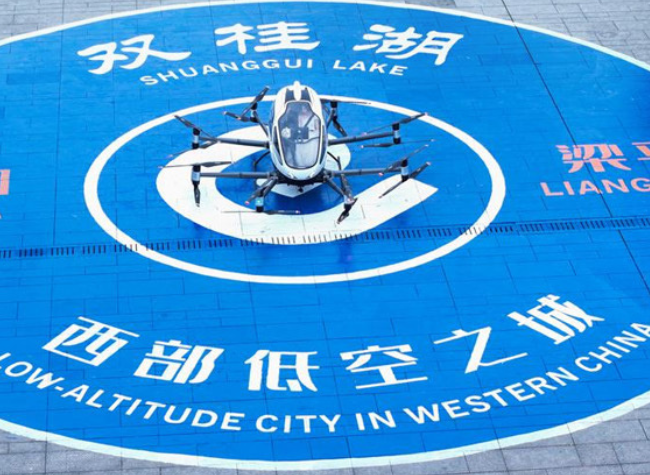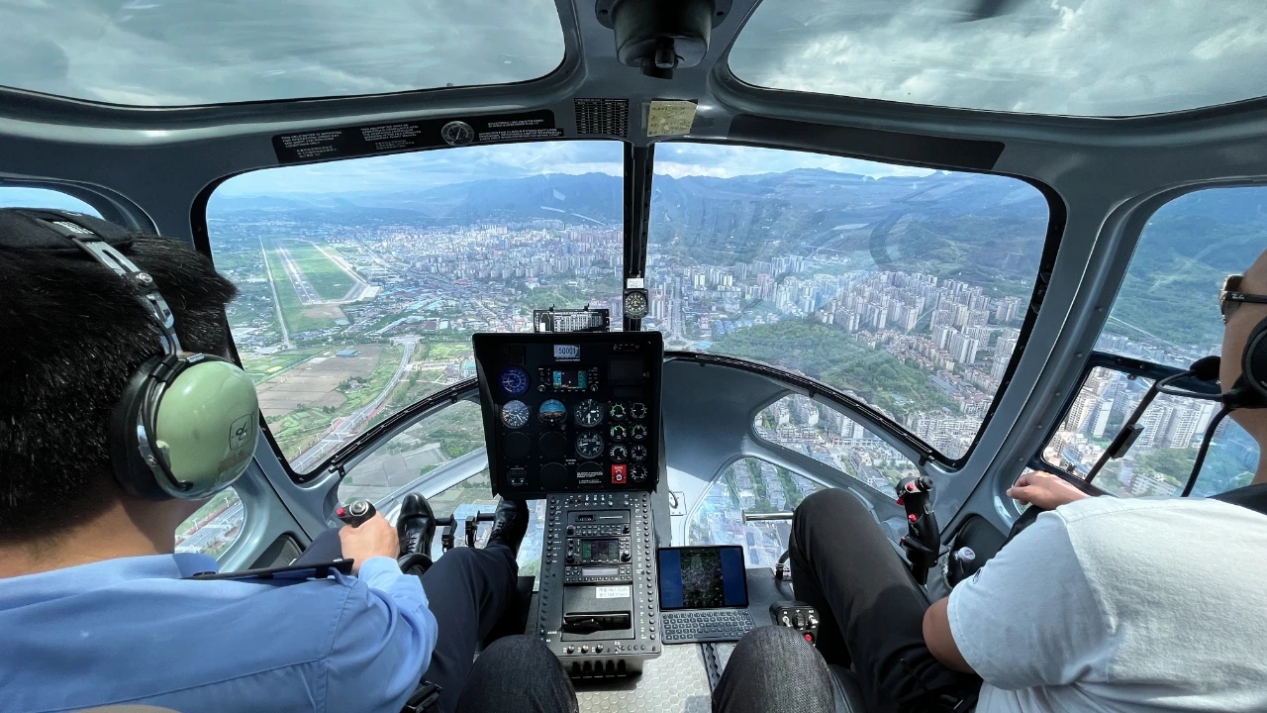 Bridging News
Bridging News
Drones, eVTOLs, and More: Western China's First Low-Altitude Expo Takes Off in Chongqing

On April 8, 2024, an electric Vertical Take-Off and Landing passenger aircraft completed its global maiden flight in Liangping. (Photo/cq.ifeng)
Chongqing - The first Western China Low-Altitude Economy Expo, held July 11–13 in Liangping, Chongqing, marks a major step in China’s push for “new quality productive forces”—with low-altitude aviation emerging as a key frontier for innovation and regional growth.
The low-altitude economy—defined as economic activity occurring below 3,000 meters of airspace using manned and unmanned aerial vehicles (UAVs)—was first incorporated into national planning in 2021 and formally included in the 2024 government work report. Powered by advancements in AI, 5G, autonomous flight, and electric propulsion, this emerging sector has become a key pillar of China’s next-generation industrial development. In 2023, the market value of the sector reached 505.95 billion yuan (approximately USD 73.9 billion). Projections estimate it will surpass 1 trillion yuan (USD 146 billion) by 2026 and grow to 3.5 trillion yuan (USD 511 billion) by 2035.
Chinese companies are already leading the way in low-altitude aviation. DJI dominates the global consumer drone market, while EHang pioneers autonomous air mobility. Platforms like Meituan have launched over 40 UAV delivery routes in Shenzhen, handling over 10,000 daily orders at around 40% less cost than traditional couriers. As operations scale, air taxis are also expected to see prices drop by as much as 60%, signaling a fast-approaching shift in urban transport.
Despite strong national growth, the low-altitude economy in western China faces several challenges. Certified general aviation airports remain scarce, and fragmented airspace planning continues to limit the deployment of complex UAV operations. Inland regions also lag behind in supply chain maturity, advanced manufacturing infrastructure, and integrated testing capabilities. Currently, more than 70% of the country’s low-altitude economic activity is concentrated in coastal areas, underscoring a significant regional imbalance.
Liangping, the host district of this year’s expo, offers a model for inland development in the sector. It is home to Chongqing’s first dual-use (civil-military) general aviation airport, which features a 2,400-meter all-weather runway and offers enterprises seamless commercial access with zero construction costs. The district oversees more than 6,000 square kilometers of open airspace and experiences over 300 flyable days annually—ideal conditions for experimental and commercial low-altitude operations. With its aviation roots tracing back to 1923, the airport also stands as a symbol of Chongqing’s long-standing aerospace legacy.
In recent years, Liangping has introduced a comprehensive policy package backed by a 10 billion yuan (USD 1.46 billion) industrial fund to accelerate sector development. Key projects include a smart aerospace factory by the 11th Research Institute of China Aerospace Science and Industry Corporation, as well as the western operations center of drone manufacturer JOUAV. The district is also attracting universities and research institutions, which are establishing an industry research academy, a flight testing center, and a UAV verification laboratory.
In partnership with DJI, the district co-founded a training academy for the low-altitude economy. Its programs focus on aerial systems, precision agriculture, and logistics. Today, the academy supports drone-based agricultural services covering over one million hectares of rice fields annually, helping to significantly boost rural productivity across central and western China.

A real-world use case: Liangping deploying police aircraft to support operations. (Photo/Xinhua)
The expo aims to turn Liangping Airport into a live showcase for low-altitude innovation, featuring six themed zones highlighting helicopters, fixed-wing aircraft, electric vertical take-off and landing (eVTOL) , next-gen UAVs, and dual-use aerial systems. Attendees can watch real-time flight demos, including a cargo test flight by the Rainbow-YH1000 drone.
The opening ceremony features the official launch of a new low-altitude economy research institute and the release of the 2025 list of ten leading innovation cases in the sector. Several major aerospace and semiconductor investment agreements are signed on-site. In parallel, a STEM outreach event welcomes 600 students from regional aerospace schools for a lecture on space exploration, aiming to inspire the next generation of aviation talent and innovators.
In addition to the main expo, Liangping will host an extended summer program from July 11 to August 30. A 3D aerial drone show featuring 1,500 synchronized UAVs will light up the night sky. Visitors can also explore aviation-themed food stalls, VR simulation zones, and enjoy sightseeing flights over the region’s lush countryside. Aircraft simulators for popular models such as the Cessna 172 and Robinson R22, along with immersive VR experiences like drone racing and virtual spacewalks, will be available throughout the event.
 Related Stories
Related Stories